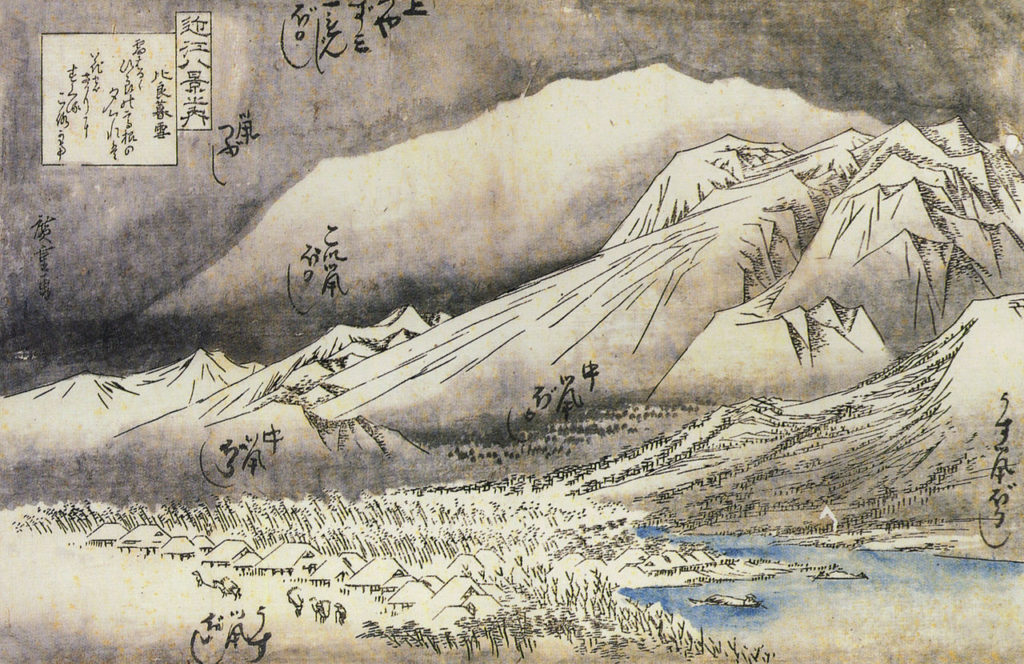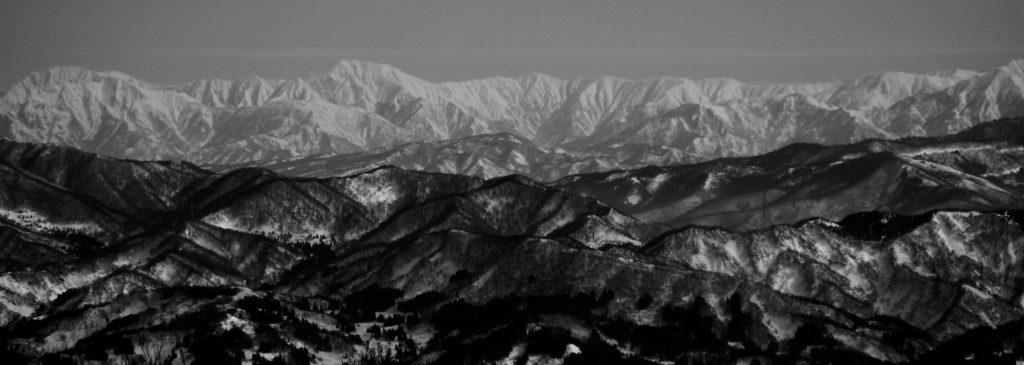RIDERS OF THE WHITE VOLCANO
xx
A snowboarding extravaganza in backcountry Japan and a few charmed days and nights in Tokyo.
by Simon Schreyer. Photos (if not credited otherwise) by Daniel ‘Naisi’ Kudernatsch
xx
“All Heaven and Earth
Flowered white obliterate…
Snow…unceasing snow”
― Bashō
xx
“With luck, it might even snow for us.”
― Haruki Murakami
xx
xx
The plane takes a wide sweep through the crimson dusk.
Some last sun-rays flicker sparks of gold off the tip of its wing. Swiftly we gain in altitude, the darkly green landscape opening up beneath; a densely patterned carpet of round and jagged islands on that vast strip of land, connecting the Baltic coast of Finland with the White Sea of Russia.
The hypnosis of air travel has already taken hold – the purring buzz of the engines has unfolded a steady trance, people are accommodated, drinks have been served, entertainment has been chosen and blankets are gently wrapped around children who have only now slipped into slumber.
Then night falls, but it doesn’t really, here at the Arctic Circle. It merely sinks down gently, never really closing its plum-shaded curtain. As soon as the European sundown has flamed out on the horizon behind us, the serene luminescence of the Asian dawn is setting in. We are traveling against the clock, shortcutting the new day drastically.
Outside, the sky above the Barents Sea remains a foreboding ice-blue, frosty, and eternally indifferent. Minuscule snow stars gather innocently in the round corners of my window; the air on its (not so) far side is lethally cold.
For hours we cross the night skies over frozen forests, parted by thick bands of rivers, taking their slow, winding courses under the March moon. From time to time, maybe every ten minutes or so, a tiny light can be spotted on the ground, but what its source might be can’t be detected. A lonely party of lumberjacks perhaps, some tripping trappers, or a meeting of spies on a KGB outpost? Never shall I know – and that’s just fine with me.
Leaning back into my seat, I take a long sip from a rather strong Bloody Mary, put on my sunglasses, and listen to Headhunter and Photek on my powerful AKG travel headphones.
I awake to the sight of Japan below, miles and miles of brownish-green squares with metal irrigation pipes and agricultural hi-tech. Occasional fluffy clouds pass by at leg’s length; the beautiful Spanish-looking, but German-speaking air hostess puts a cup of black coffee in front of me, and the morning turns out to be a mild one. It is my first one in Japan.
At Narita airport’s arrival zone I hug my fellow Japan traveler and the mastermind behind our trip, Daniel Kudernatsch, known to the international snowboard community as ‘Naisi’. He arrived a while ago on an earlier flight and looks a bit bedraggled, slightly jet-lagged, and pale, probably just like me. But that can’t keep both of us from wide-angled grinning. We’re here on a mission into unknown territory.
Naisi is from Vienna, a snowboarder, mountain biker, photographer, magazine editor (climax-magazine.com), and co-founder of the sadly and far too early demised 69 Magazine – a leisurely written, playfully lay-outed quarterly on board-sports, travel, and urban lifestyle. Naisi is also of exuberantly joyful temperament. Because his perspective is permanently positive, possibilities are sprinkled on his path like cherry blossoms.
The only other European traveler at Narita at this early hour turns out to be Terje Håkonsen, of all people. How auspicious for a snowboarding trip. The legendary Norwegian pro is on a stopover to Hokkaido, Japan’s second-largest island up north.
When I take his and Naisi’s picture, his smile is tired but honest, and that’s just how we love our heroes. I myself decline to be photographed with him in a fit of modesty and general horror of displaying fan behavior – and, of course, regret missing the opportunity to this day. Terje’s mystique, however, remains intact as we part ways.
xx
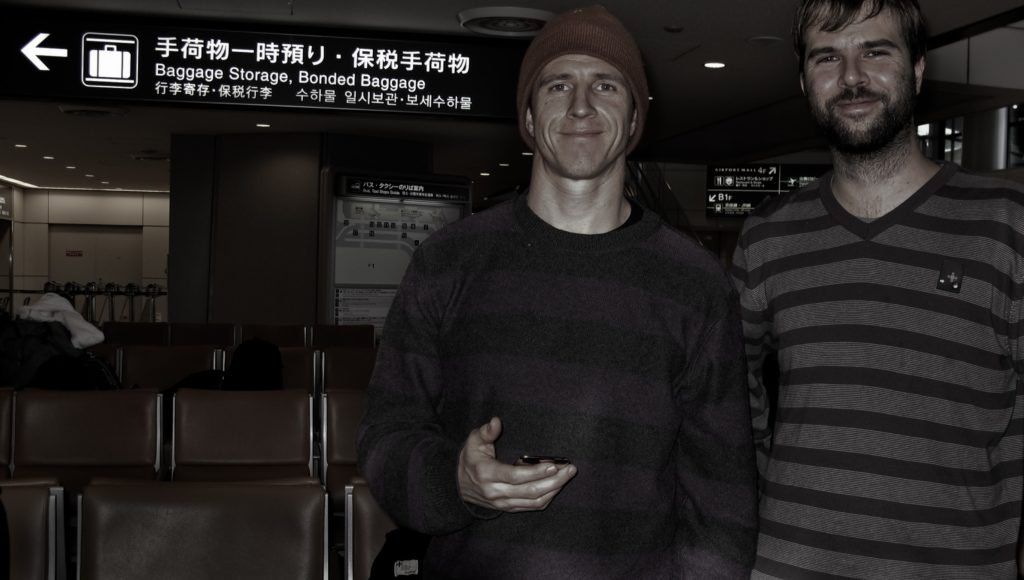
© Simon Schreyer
xx
On the blue and white Skyliner train from Narita to Tokyo, the first thing I notice is how similar to some parts of Austria the semi-suburban countryside is: the vegetation, the backyards, the occasional collection of malls, and building projects flitting by.
We sit at the window, our bags and boards tucked away in the capacious baggage area, and talk about Terje’s destination Hokkaido, which usually gets masses of snow. It is known as a playground for traveling pros.
We ourselves will be bound for Myoko Kogen, right in the middle of the main island Honshu, for a week of freeriding. But this trip into the silence of the Japanese Alps is still a few days away, which we intend to spend as wisely and as foolishly as possible, in the capital Tokyo – among 13 million other humans.
Sakura and Yachiyo, the towns we pass by, are just another collection of settlements along the tracks like you could find them in Bavaria or Pennsylvania. I see patches of small dusty conifer forests, dried long reddish reed grass, the skeletal foliage trees, and the post-winter sleepiness of the staccato-cut street scenes, as the train flashes by, under a soft blue sky.
Occasionally I have to nudge myself to consciousness, not only because I’m longing to sleep more but mainly to awake to the reality of being in Japan. I do so by looking at the signs and glancing over to the mostly Japanese passengers on the carriage.
As we are about to arrive at Shinjuku station and stand up for the doors to swing open, I start to feel as if I were wrapped in cotton wool. Drowsily I lean on my bagged board, swaying gently, and thus slightly alarming the other passengers who have no idea of my concealed weapon of joy. Quickly I lose any sense of orientation on the platform, all signs being Japanese.
We stand and stare in bewilderment, as the crowd streams around us like shawls of fish in a perfectly choreographed time-lapse sequence.
What’s worse is that I also lose any sort of interest to resolve this situation – my animal self suddenly satisfied that it has made it across the tundra of Russia to this far-off island in the Pacific Ocean. My astral self, of course, is still somewhere behind me in the confusing limbo of transit.
If it is not for Naisi, I’d still be standing there, for it is he who shakes me from my strange little reverie and points out the way to a ticket counter. Surprisingly, if not shockingly, the clerk does not speak a word of English and, apparently shamed by this fact, he even avoids eye contact like a schoolboy who can’t solve an algebraic equation. We politely end our quickly crumbling communication and move on – bags and snowboards still in tow, of course, feeling as misplaced as a Jamaican bobsleighing team on some dune in the Sahara desert.
Eventually, we find our path out of the concrete maze, and successfully hail a cab, its uniformed driver wearing white cotton gloves and never once smiling, while at the same time unfailingly displaying utmost grace and pride in his profession. As we patiently glide through the morning traffic, I open the window and take in the spring air, uncommonly fresh for a big city, Seaside fresh almost.
The scenes and the pace of the people passing by are reminding me of a more futuristic sort of Manhattan: everything is a bit more round than edgy, more colorful, diverse, and toylike in its appearance, and gentler in its demeanor. Also, there is not a speck of dirt on the streets and the sidewalk – not even dust.
We take a room in the stunningly stylish Monterey Hotel in Akasaka, on the far side of a large park. From the soft red carpet on the staircase, and the beautifully framed landscape oil paintings to the fin-de-siècle, lily-patterned wallpapers, it is just exquisitely elegant in a New England kind of way. Nevertheless, the gap between knowing that I’m in Japan, and realizing it is further widened by the interior of our hotel.
I will not bore the reader with the facts of Tokyo, and move forward swiftly to the wildest dreams of snowboarding in the winter wonderland to its north, but I must say, as a first-timer, that I liked Tokyo immensely. In the few days we spent there, I found it to be refined, silent, and far ahead of its time concerning urban life.
xx
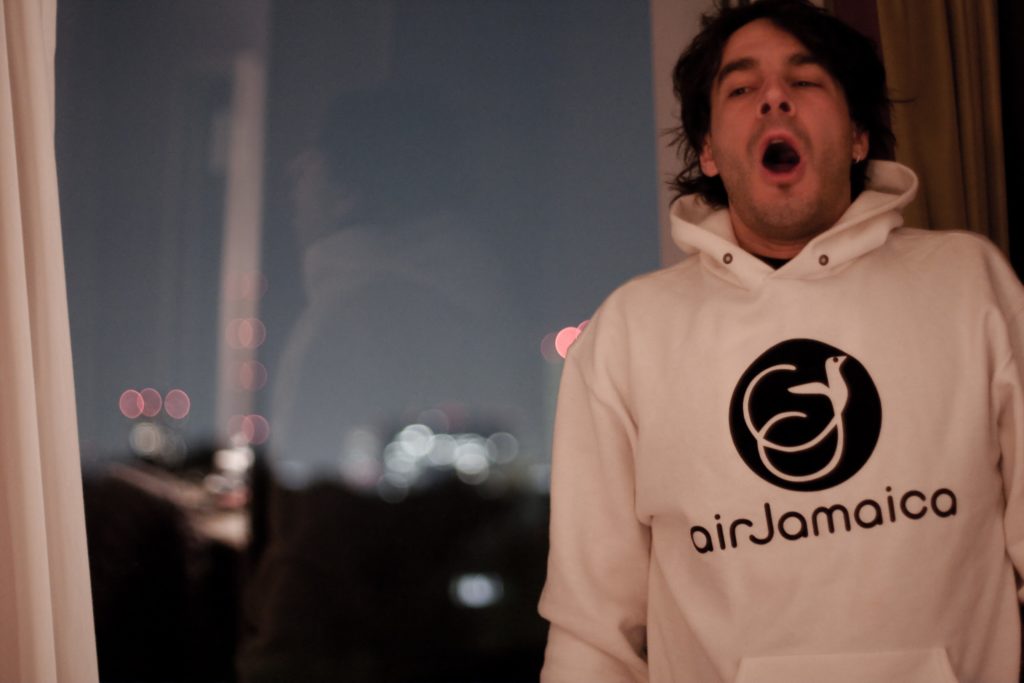
xx
In the following days, Naisi and I check out hyper-modern and rather keen fish restaurants, working-class noodle kitchens, Western-style cafés, Shibuya’s perplexingly sexual costume shops, and near stroke-infusing shopping malls anticipating the 24th century, fantastically well-equipped bookstores (the only downside: all books are wrapped in stiff cellophane which will only be removed by gloved hands if purchased) and quiet massage parlors in walking distance of our hotel.
I am still touched now, thinking back to the half-dozen female employees who would gather at the front door of a massage place to wave Goodbye to me at the end of a session, as if I was a beloved seafaring relative setting sail for Surabaya.
xx
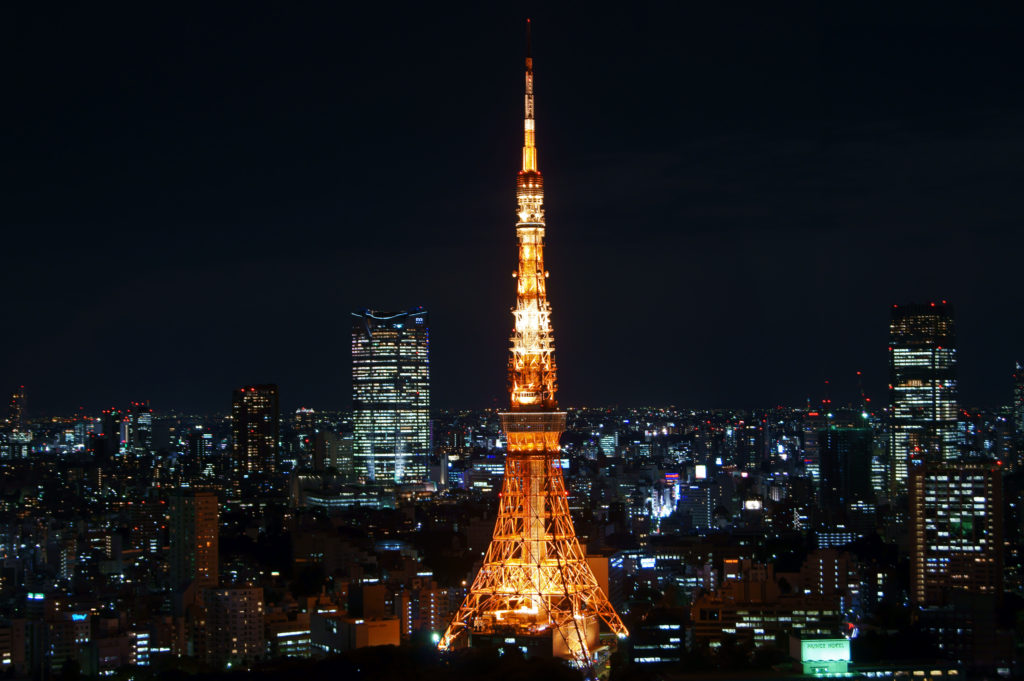
xx
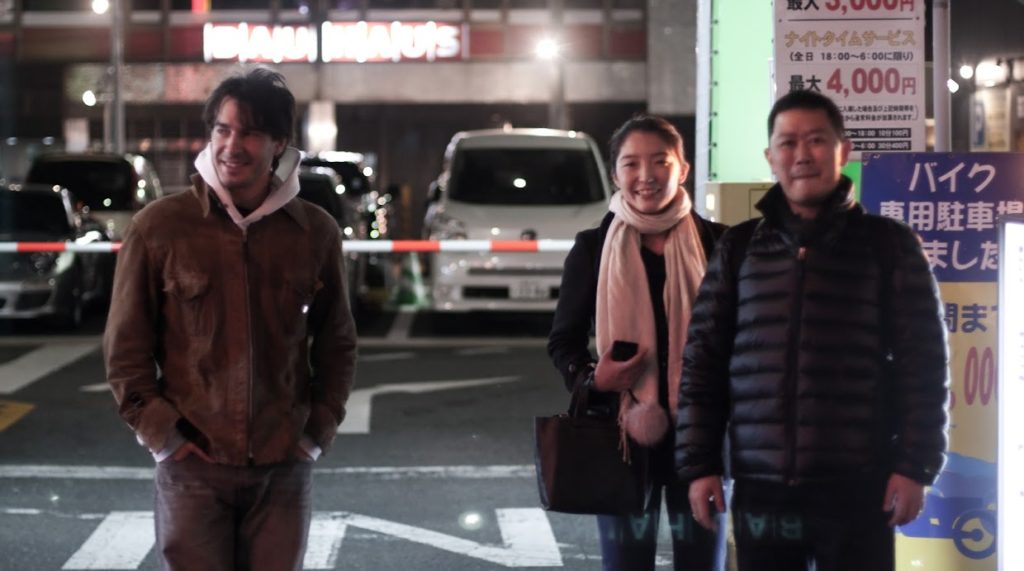
xx
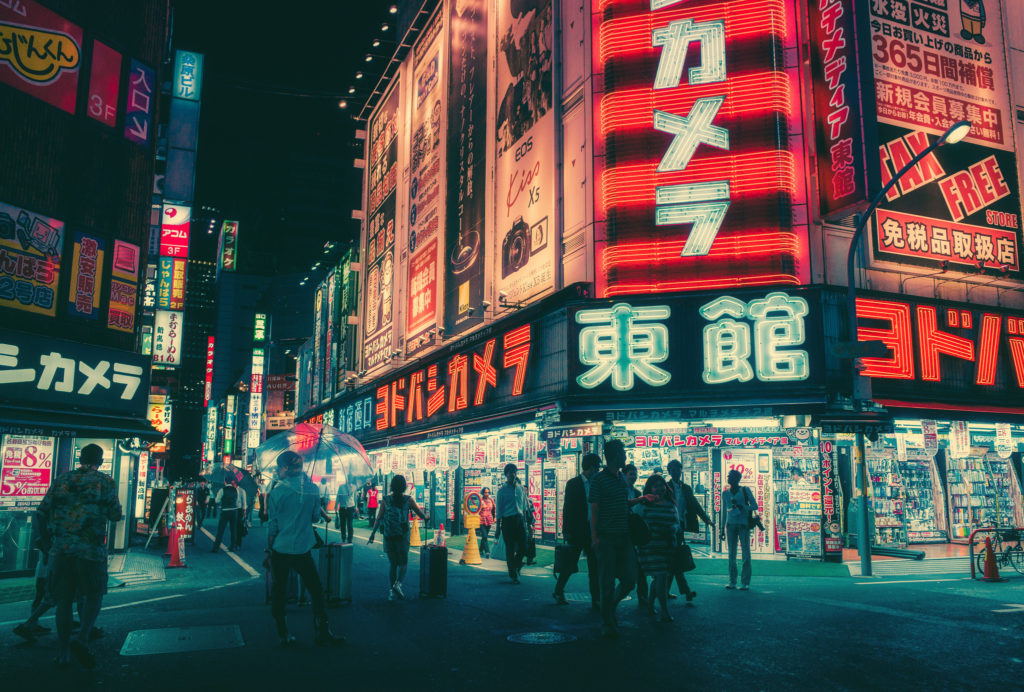
©cheesekowski
xx
At the Mori Arts Center Gallery, 52 floors above the streets of Roppongi, a girl approaches me with a paper tissue and a small, aseptic container, points to her lips, and informs me with polished politeness: “Pleesa, anoh Juveng Gom-ah!” Because I first do not understand her inquiry on the grounds of her accent, an awkward moment ensues. Whereupon she, even more distinctively courteous, repeats her request (“Please, no chewing gum!”). I guiltily lay off my gum within the Kleenex’ immaculate folds, and hand it back to her. Then we both take a bow as if we had performed an important cultural exchange.
The current exhibition at the Mori (Spring 2010) is about the intersections of medicine and art and shows medical artifacts and biotechnological designs, anatomical sketches by Leonardo, sickness charts from many ages and cultures, all the while exploring humanity’s fascinating and problematic relationship with the body.
xx
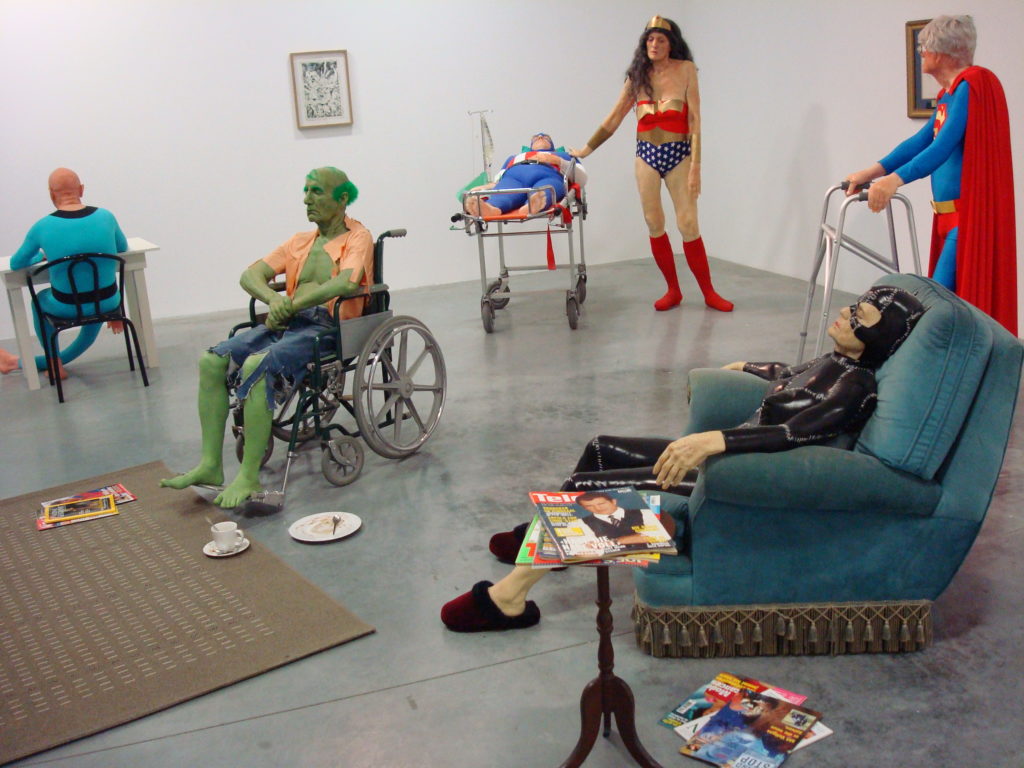
xx
It also features an installation by Gilles Barbier, called L’Hospice (The Nursing Home): an ensemble of superhero dummies in a retirement home. The arrangement includes a geriatric Superman and Catwoman, in plush slippers, having passed out in her armchair with the TV remote control in her limp hand.
Afterward, Naisi and I feel in need of nursing a drink at the Observation Deck’s sky bar, overlooking the million blinking lights of the big city below. I fancy myself as a solitary, self-reliant character in a Murakami novel. The reason for this might be that I am just reading one: After Dark, which I find a bit arbitrary after the funnels of intensity that are his Wind-Up Bird Chronicle and South of the Border, West of the Sun.
xx
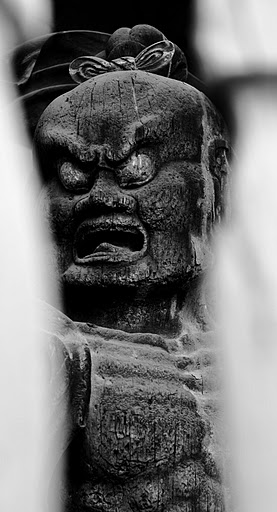
The sheen of the moon lies on the flanks of Fujiyama, rising in the far distance, unperturbed in its Zen silence.
Again I can’t be helped to think of a writer: The great Peter Matthiessen, himself an ordained Zen priest, who once, in an interview, told the story of a young monk who climbs Fuji with his elderly, stern roshi (master). As they’re halfway up, the sun rises and the young man bursts into praises of joy: “Oh roshi, how wonderful! Look at the sunrise! I can hear the birds waking in the valley!” But the old monk continues his ascent with a furrowed brow. At the top, the young monk, for the fifth time, is exalted: “How splendid! I can’t believe the beauty of this scenery! Don’t you see, oh roshi?” Finally, the master faces his disciple and fumes: “Yes! But what a pity to say so!”
As we head back to the hotel somewhat lightheaded, snowflakes dance furiously through the streets of Tokyo.
xx
xx
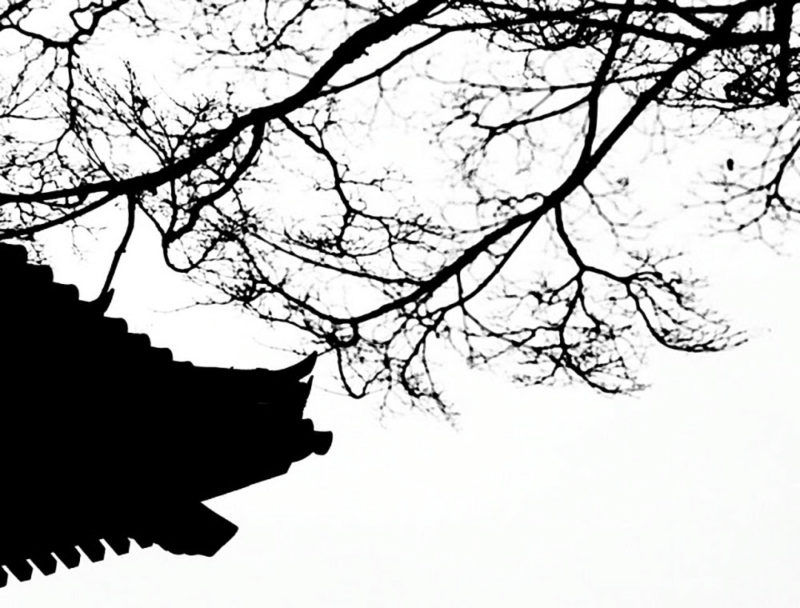
xx
xx
On a warm Kodachrome morning, we wander through imposing stone gates into the compound of the Kokyo, the old Edo period palace: I remember the Samurai quarters, their architecture exuding stocky strength; buildings that retreat in themselves, layered like armors; English lawns, cropped short, but still dry and brown from winter; the abandoned teahouses in Ninomaru Garden with their low, projecting copper roofs and sunburnt wooden walls; the wind sighing in a bamboo grove; dreamy stone bridges with simple, but captivating patterns; a bent-up, sky lifting roof slope of the fujimi-yagura (Mt. Fuji view keep), touching the flatted, storeyed crown of a majestic cedar.
xx
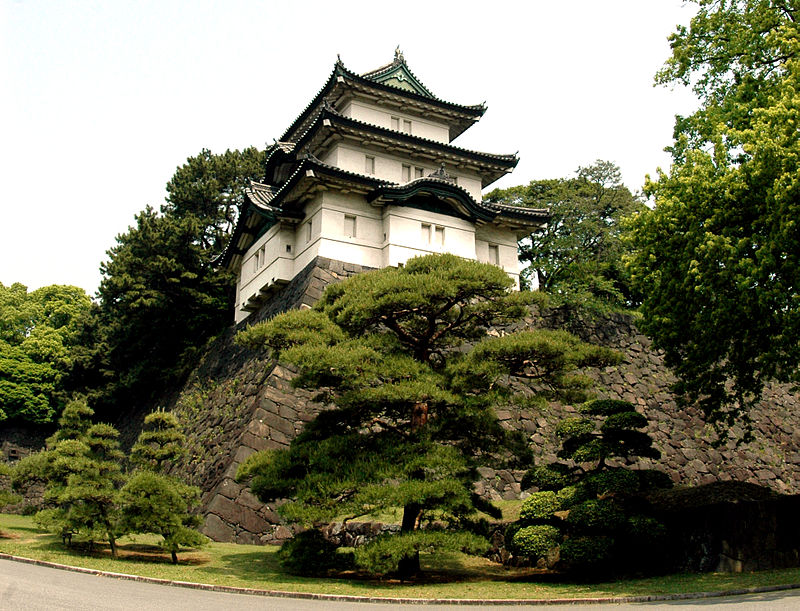
©wiki commons
xx
xx
xx
A few days later, we board the Shinkansen bullet train and zip through the countryside for an hour and a half towards the Olympic city of Nagano. There we switch to a small regional train which takes us to the charming, old-fashioned ski resort of Myoko Kogen (one of Japan’s first ski resorts, visited regularly by the Royal family since 1916, it used to be three villages, united as one town, Myoko City, only in 2005).
Looking out the window, our hearts sink with every mile: There is not a patch of snow to be seen since we left Tokyo. Nevertheless, we hold on to our snowboard bags and our hopes for a sudden comeback of winter.
We check into the dignified Akakura Hotel Annex in Shin-Akakura, built in the 1820s at the bottom of Macyama, a foothill to mighty Mount Myoko (also known as Myoko-San or Echigofuji). The hotel’s ancient owner, a sad-eyed but very forthcoming and well-traveled Methusalem informs us that there is indeed snow on its way. To prove his point, he leads us up to the building’s attic with small patient steps, finally approaching a heavy metal door that leads to a flat part of the otherwise slanted roof.
As the door swings open, a flurry of cool wind tousles our hair and clothes. High in the evening sky stands a golden stratocumulus cloud of otherworldly dimensions. Almost daunting is its sublime immensity. Feeling diminutive, we retreat into our Japanese-style double room, made of thin canvas, tatami mats, and tenuous woodwork.
The next day begins with a breakfast buffet. It includes a dark salad of fried grasshoppers – jagged legs and all in shiny honey-soya-sauce –, algae rolls, perfectly poached eggs, and strong green tea. Then the keeper of the ski storage space hands us our boards and we step outside onto the village streets. Only, they are gone.
The landscape has disappeared inside last night’s giant cloud that had hung so high in the heavens. Overnight it has descended and it is shedding its heavy load. It’s snowing. In fact, it’s snowing so decidedly and densely as I have never seen it in the Alps or anywhere else. A divine call seems to have been made and now the spirits of the sky are at work. It will continue to snow relentlessly for the next three days, the forecast says.
xx
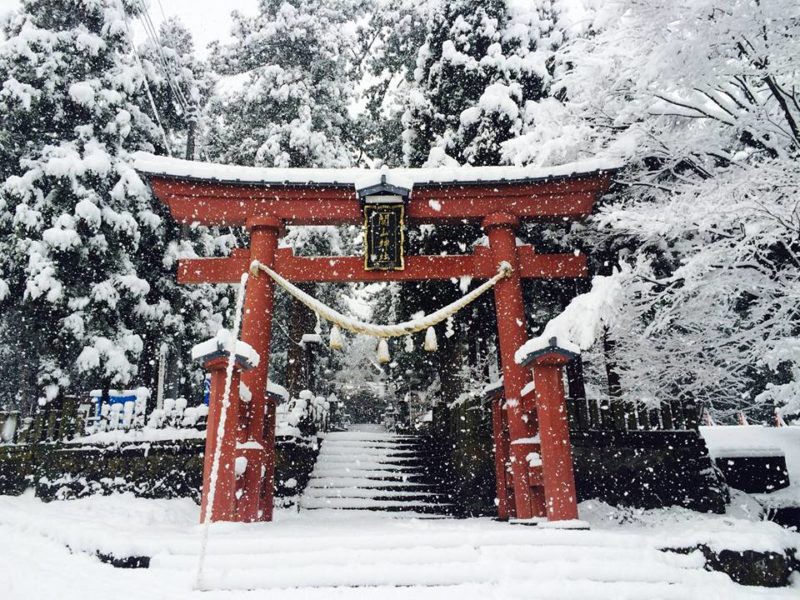
©Myoko Ski Resort
xx
The woods are sinking fast under huge white pillows, as we glide up the Myoko resort chairlift. The night before, wandering along the hotel’s wooden hallways (in silent misery for the lack of snow), Naisi bumped into a merry-go-lucky Australian who turned out to be an old acquaintance of his. His name is Richard Hegarty, and he has an air of suave confidence about him. Richard looks like a certified engineer of a fun time, and he is a professional member of the global snowboard- and ski community.
xx
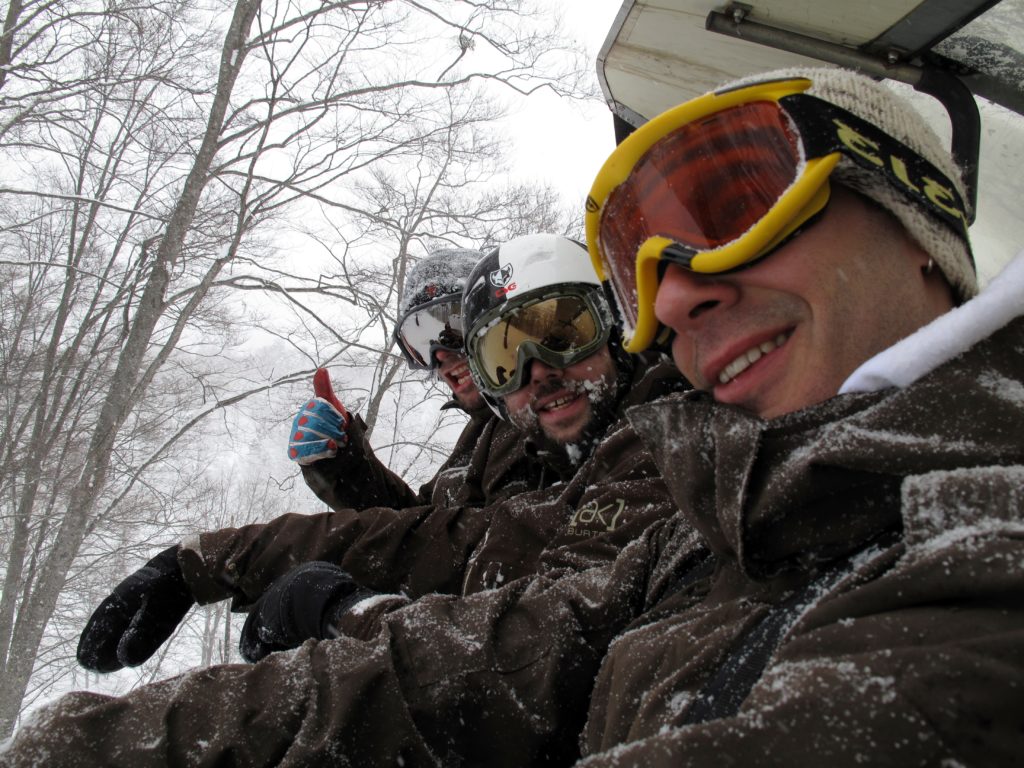
© Richard Hegarty
xx
Japan is a neuralgic point in this loose and self-organising network, chasing the winter and wandering with the weather. Other centres of gravitation in this web would be the Southern Alps of New Zealand, Haines in Alaska, Jackson Hole in Wyoming, Las Leñas in Argentina, the Alps of Europe and places like the Canaries, Polynesia or Hawaii, thrown in for surfing when you want to take a break from Winter but still keep on riding. So much for the lusciously lush life of the traveling powder hound. Having said that, times have become harder: Past is the gold diggers’ period when sports TV channels and snowboard magazines paid good money for photoshoots and pioneering articles.
Considering its more archaic use of one board instead of two, it is possible that snowboarding is even older than skiing, but it was put on the map commercially with the first ‘snurfer’ in 1965. The prototype of a snowboard however, the ‘Moss Snowstick’, was actually developed, you may guess: in Japan. Right here, in fact, at Akakura Onsen, Richard explains, by a surfer called Shinzo Tanuma. Snowboarding soon became popular among mountain lovers, surfer types, and skate punks in the US by the early 1980s and came to Europe by the end of that decade. The hype that happened to the young sport in the mid-Nineties is gone now, in 2010.
But we are still here and we have reached the end of the lift. It should be mentioned, that all the while (even though the chairlift runs silently) Japanese pop music is blaring full blast from the tops of the pillars, to be heard on either side for hundreds of meters into the misty distance.
Irritated at first by this stomach-churning noise, I find it enhances the acoustic orientation significantly to hear the plastic beats not too far away when, later in the day, we get lost in the winter wilderness of the more secluded gullies, canyons, and alternative runs.
Naisi, Richard, and his Aussie pal Phil are already strapping on their bindings and cleansing their goggles. While I still grapple with my own snow-packed binding at the chairlift’s exit space, the other three cunningly disappear into the whiteout like hungry wolves.
I estimate that the snow grows at a rate of 12 inches per hour. On a flat field, which leads to the slope, I lose speed and immediately sink hip-deep into the dry, silky powder. I almost have to dive down with my head under the surface to undo my bindings and dig out my board, so I can strap it on again over the surface.
To no avail. I can’t manage to get my board back on the front foot so I can use my back leg to push myself over the flat field. The snow is just too deep for that – terrifyingly deep.
I should maybe mention at this point, not to boast but to put in perspective, that I am not a beginner but an experienced snowboarder who grew up skiing as soon as I could stand upright, like every regular Tyrolean child. I ride (with pride!) since 1988 and worked as a snowboard instructor for seven years in my twenties. And now I feel like a Dutch housewife who won a three-day introduction to snowboarding (sorry Dutch housewives!).
Also, I should point out: We haven’t even gone off-piste yet – I am still on the marked slope.
xx
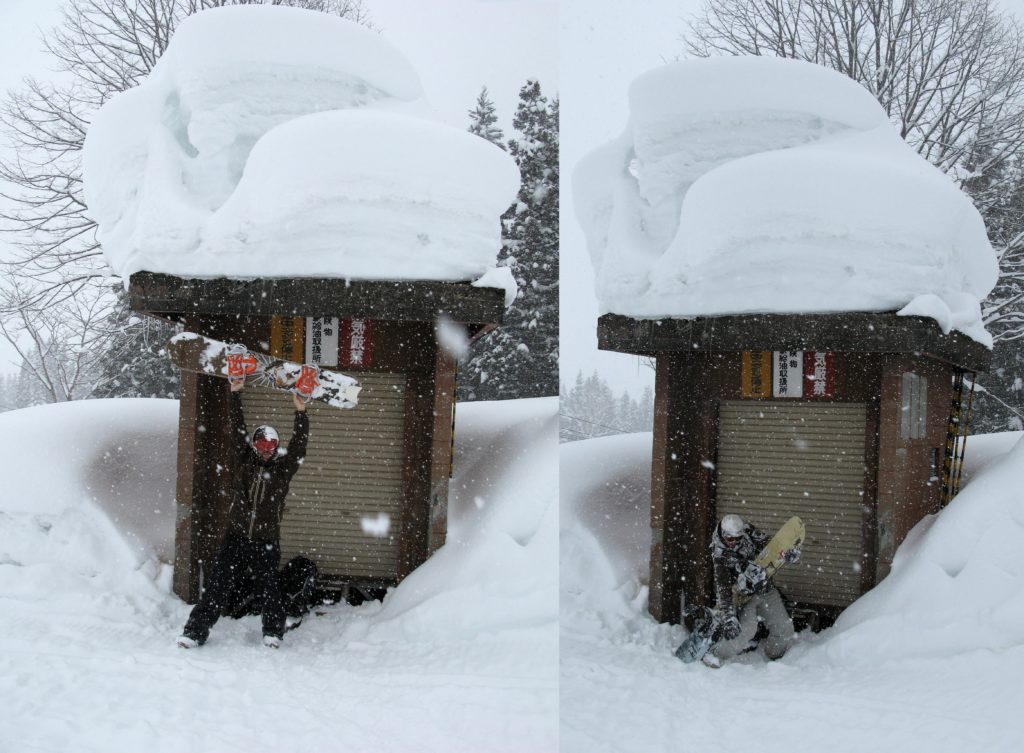
xx
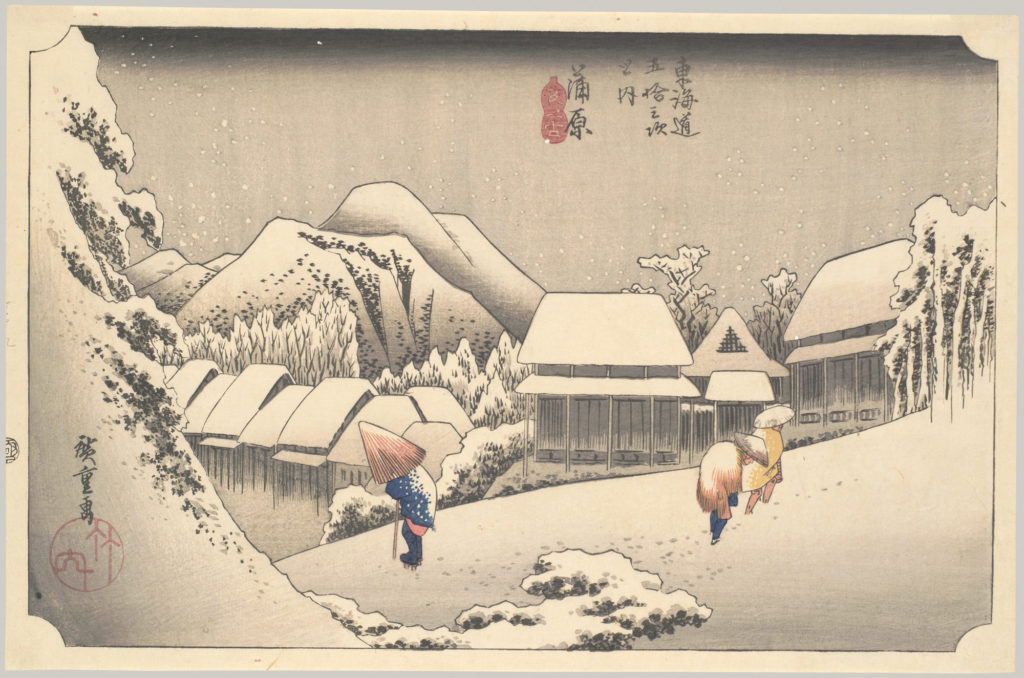
(1834)
xx
I don’t know where all the Japanese around me have gone, maybe they have created elaborate tunnel systems under the snow. “Too much snow!” the Japanese lift guy shouts over to me, smiling in ecstasy. The groomer vehicles are working non-stop but it is – as the Australians never cease to emphasize – ‘dumping’. It’s shameful, but I can’t even get up, neither from kneeling nor from sitting. And not only that, I’m close to suffocating. While my buddies are already gone, I have to fight off a small panic attack, being left behind and all but drowning in powder. All I can do is plant my board edge first into the heaps of white before me, and pull myself towards it again and again. After five minutes I am sweat-soaked and exhausted, but I have reached a steeper part of the slope, which allows me to put the board back on my feet and let go.
Finally, I am getting the hang of maneuvering in such crazy conditions, and I catch up with my mates, who, of course, chastise me sarcastically for being so slow. Two minutes ago I was close to tears of desperation, now I secretly feel like crying because I’m so happy that I have found my friends again. I feel like hugging them but this would require opening my back binding in order to hop toward them, and I can’t be bothered with such complications anymore. The general mood among us from this moment on is pure childhood days happiness. Today we don’t even have to go off-piste to board deep powder.
The snow quality is pristine: Honshu’s lunate north coast catches its snow mostly from Siberia, on average 13 meters of it each winter. Over the Sea of Japan, the winds pick up the vaporizing ocean water, which adds salt to the snow clouds, acting as a coagulant. Thus the snow is made of large crystal clusters that make it light and voluminous, fluffy and puffy – the best you can hope for as a skier or boarder. But since the salt naturally melts the snow, it also diminishes the massive amounts quickly, creating broad rivulets gushing down the rust-red city streets of Japan’s snow country.
Although the vision on the slope is almost flat, we are whooping with joy, practically all morning. At lunchtime, we retreat into a mountain restaurant, red-cheeked, with ruffled hair and wet clothes. We order noodle soups, dumplings, and lasagnas by printing out small sheets with dish numbers from a photo wall depicting the culinary choices in that usual bleached-out and rather unappetizing way of most food images everywhere in the world. Then we have to stand in line, handing our food tickets to a cook who returns with our dishes pronto.
Also, there is a huge soft-drink machine standing in a corner; its available contents include hot drinks like tea, cacao, and almond milk (deliciously nutty and creamy) in metal cans, rumbling down from the machine’s intestines, so hot that you have to juggle the can from one hand to the other until it has cooled to the touch. There is also a Japanese sort of Fanta with an artificial grape aroma to which I become instantly addicted (so hooked in fact, that I’m getting up every night, at least twice, to sneak out to the corridor and feed clinking coins into the vending machine in our hotel down in Akakura).
Most guests in the mountain restaurant are Japanese families (there are about 8 million skiers and snowboarders in Japan), but there are also many Australians, French, Swiss, and some Americans. To our embarrassment, we are being camera-interviewed by some very nice but very talkative folks who eventually put out the resulting film on youtube. Outside it keeps on ‘dumping’ and I find myself adapting to my fellow riders and adopting this rather prosaic Americo-Australian expression for the omnisensual wonder of snowfall.
xx
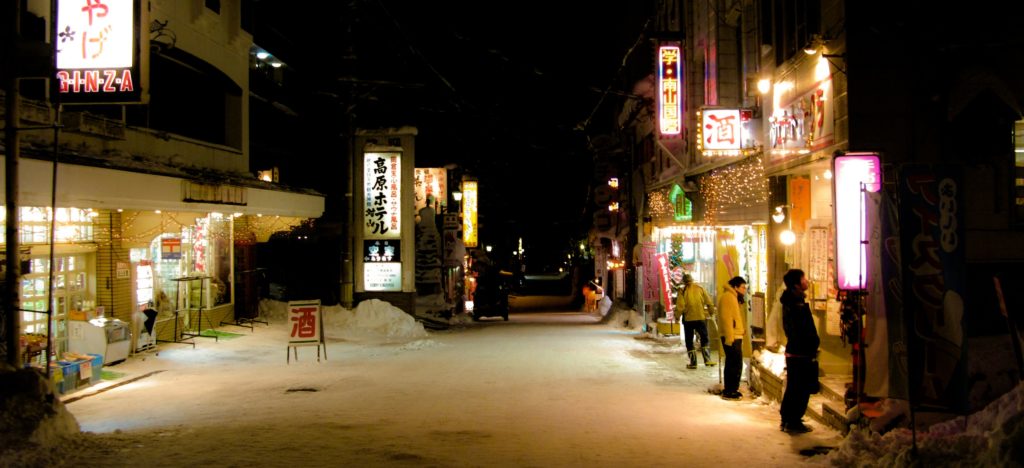
xx
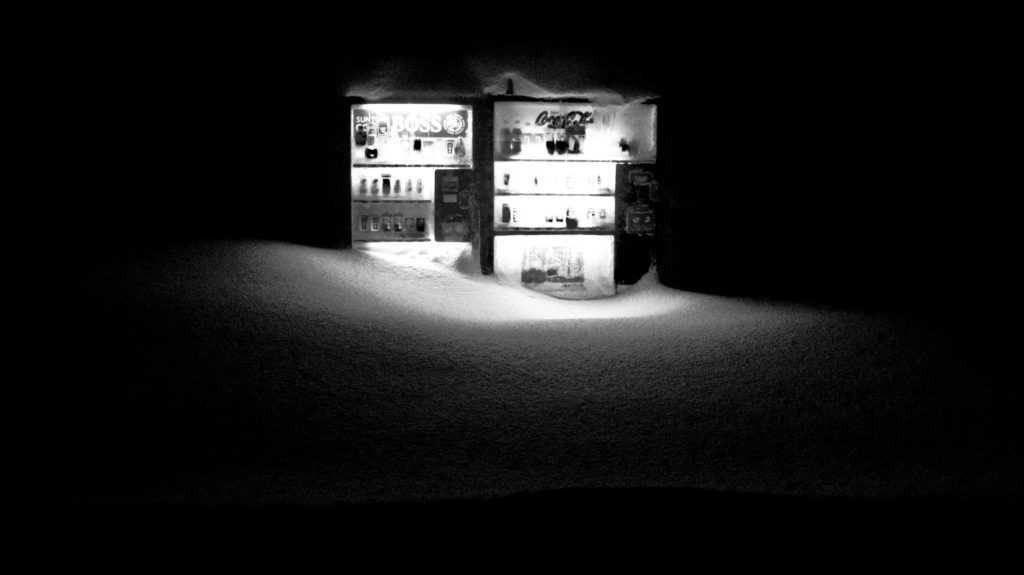
xx
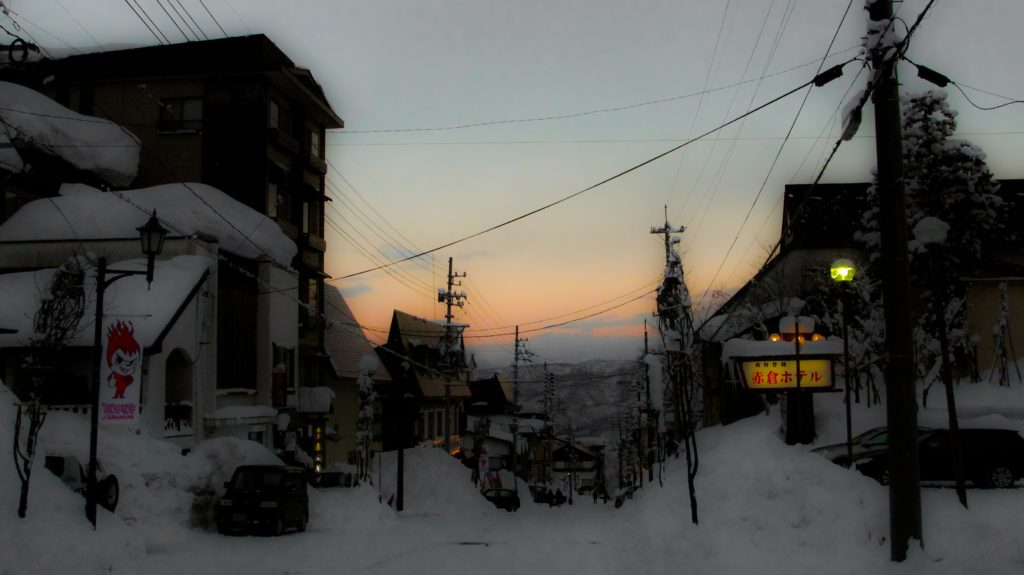
xx
At night we are flattened by our sporting endeavours and decide to immerse ourselves in the vapor-filled realm of the hotel’s onsen – the traditional natural steam bath.
With our tattoos, we are left pretty much to our own devices. Naisi’s are intricately floral, and cover as much of his body as the Mongol empire used to cover the Asian continent. In Japan having tattoos either means that you are a) a member of the Yakuza or b) a rock’n’roll freak from the West – neither of which are accosted with impunity in Japanese society. Thus we have the onsen all but to ourselves.
After a thorough cleansing wash, we smilingly sink into the hot mineral-rich water coming straight out of the volcanic depths of Mount Myoko, still visible in the dark of the evening.
The water level is about thigh high, standing up, and the pools are tiled with flat slabs of stone. The onsen is built into the indoor space and continues outside in wintery temperatures. Here we hang out until our skin is shriveled up, in the midst of the thick mist rising from the water’s surface. All heated and cozy I lean back on the rim and let the snowflakes land on my face.
When we have soaked enough in the onsen we usually go out to enjoy pescetarian snacks and spirituous drinks at the only hip place in town, just down the street from our hotel.
A young couple runs the bar. He is tall and lanky and prepares the food with ease and precision, she – tiny, funny, and pink-haired – entertains the guests and serves Asahi beer and warm sake in quick succession between tasty mouthfuls of seafood and sashimi. With some excellent Japanese hip-hop beats bouncing in the background, the small international congregation of guests soon turns into a gregarious party.
As we live it up with a newfound Japanese friend (a long-haired, jolly delegate of Naisi’s trip organization who ends up sleeping it off on our hotel room floor), thick flakes settle down on the roofs of the quiet town outside. On our way back we run into a group of sozzled Japanese businessmen in white bathrobes, giggling like teenage girls and slipping on the snow, which results in spectacular, divesting falls and adds more hysterical giggles to the scene. We gladly join in.
xx
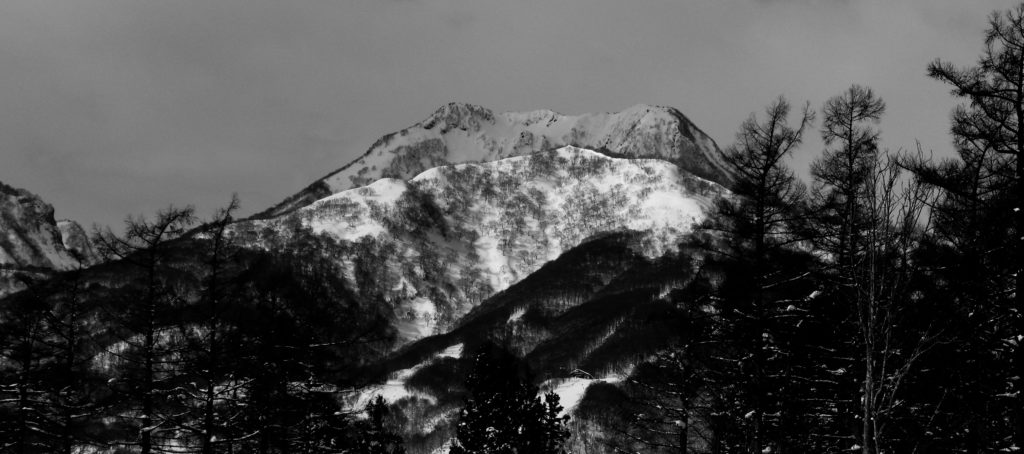
xx
On the third day, the sun comes through between fresh snow clouds for long spells and opens up a blinding panorama. Above us looms the active stratovolcano Myoko-San, a trapeze-shaped lava dome, engulfed by a round rocky ridge. Comforting 4300 years ago, the volcano erupted for the last time and carved out this crown of a caldera. Myoko-San has a distinct personality, laid-back and sovereign. Together with his brother peak Hiuchiyama, he oversees the wide half-moon bay of the Japanese Sea and the flats of Echigo, as well as the fine folds of the high Japanese Alps, rising to the North and East.
xx
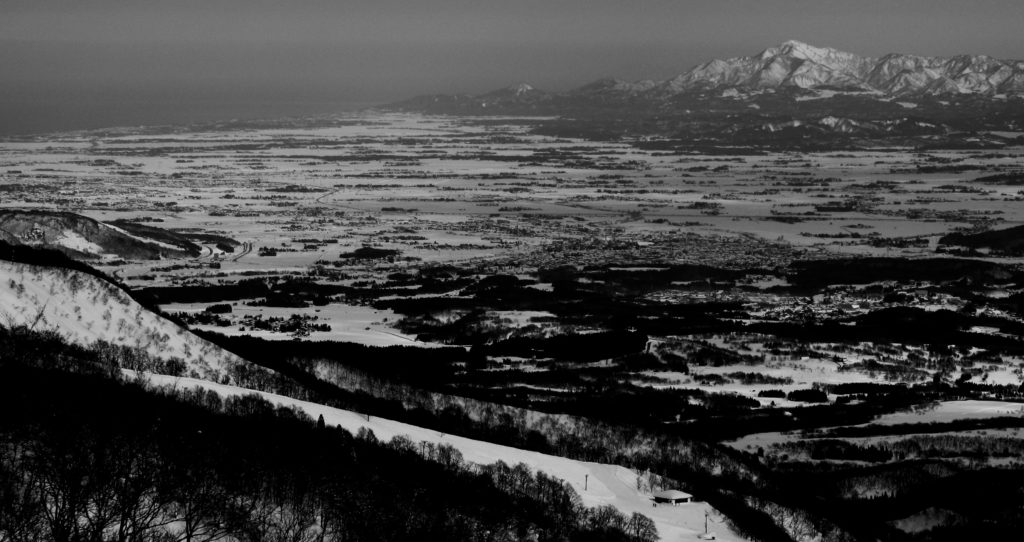
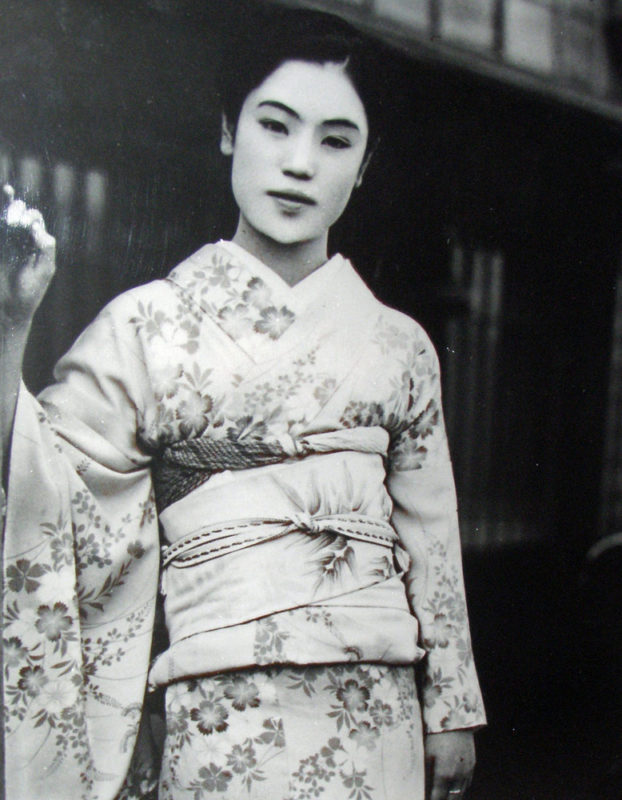
Just two valleys into the direction of the high ranges lies the town of Yuzawa, the setting of Yasunari Kawabata’s celebrated novel Snow Country (Yukiguni; 1948). The white hills, outlined in pencil-drawn precision, are clad in dark laces of underbrush with russet tops. The forests, seen from a distance, look soft as velour. Every shape in the landscape is delicate and minute, every branch is bent in filigree finesse.
We enter the woods – and practically never leave them for the entire day, exploring the more secluded valleys, and enjoying the computer-game-like inurement of repeating tree runs until we know every turn by heart. Muffled by the snowy forests, the freeriding is soft and noiseless, and the steep terrain allows for great speed.
xx
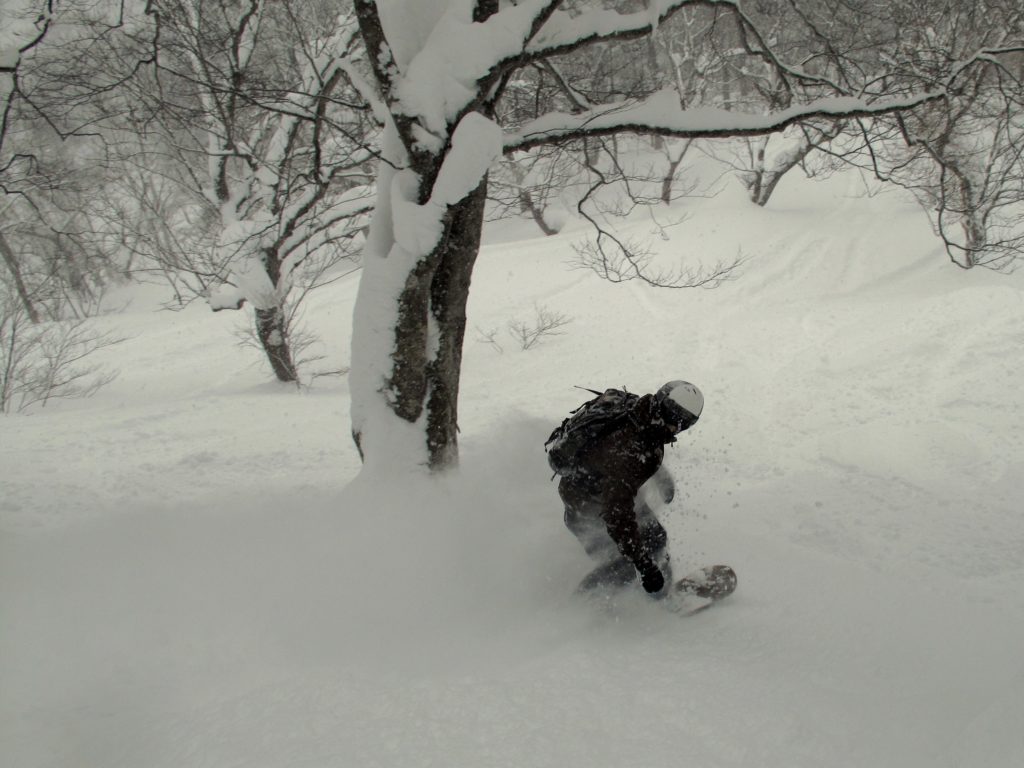
© Simon Schreyer
xx
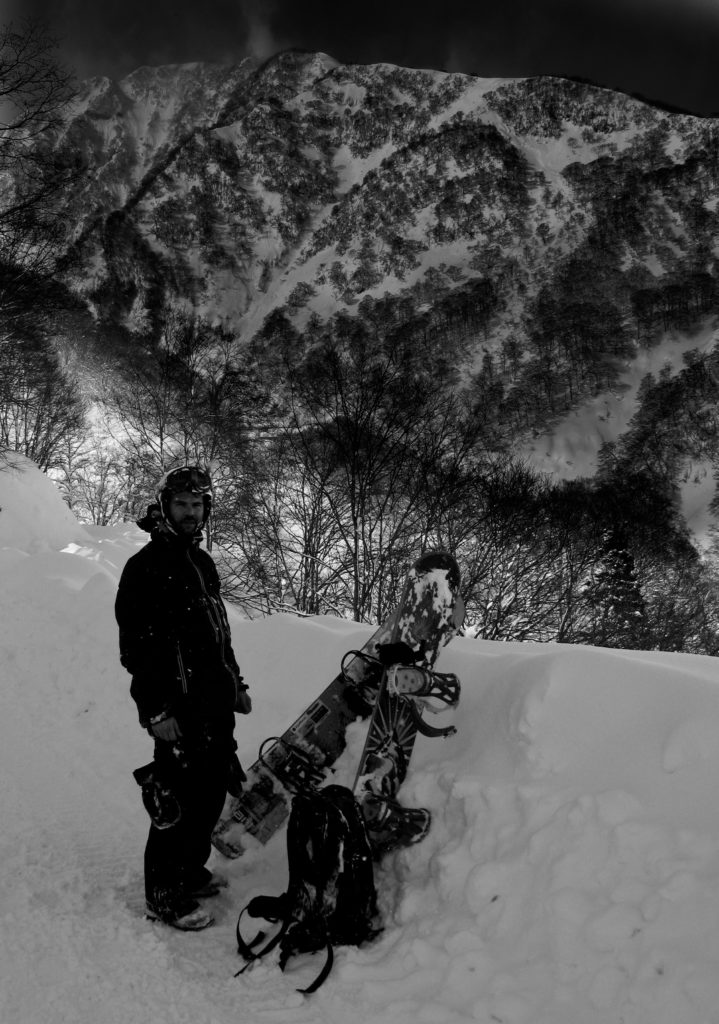
© Simon Schreyer
xx
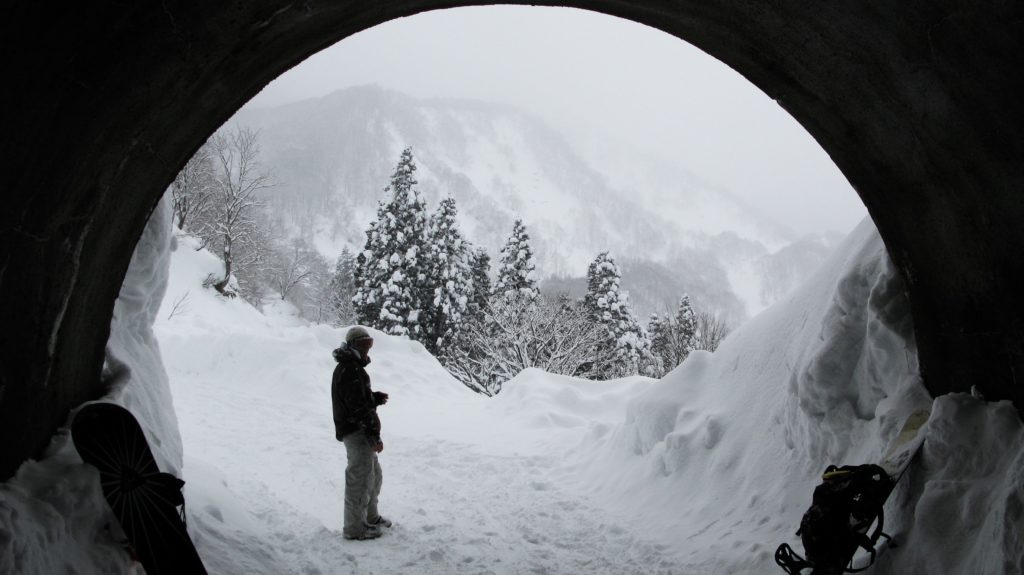
xx
In Japan, tree runs are frowned upon among locals: the ghosts of dead folk, the spirits (kami-sama) of the mountains, and the raccoon-like trickster of mythology (tanuki) live here and are better left to themselves in their white world of silence.
With all due respect, we see ourselves as part of this world: for freeriders and freeskiers, these spaces out of bounds are a sanctuary, our only pollution here are our tracks (soon disappearing under large snowflakes) and our gift for the kami-sama is our communal spirit and individual style.
xx
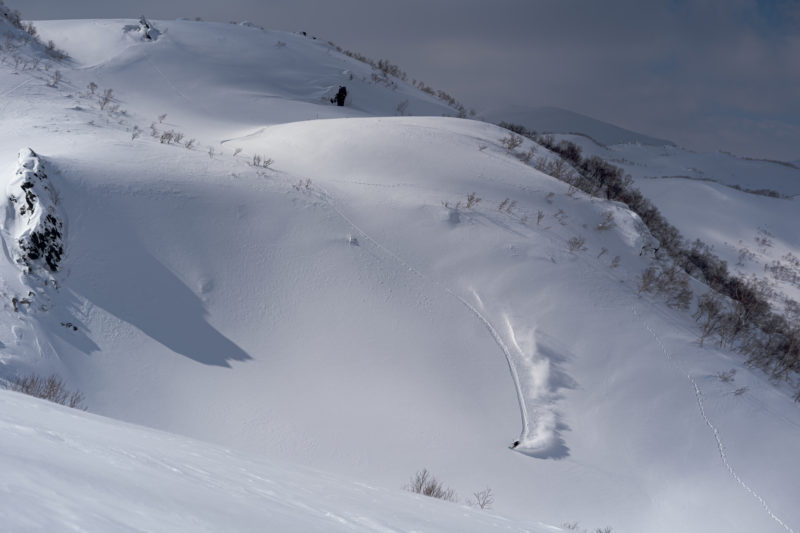
© David Hofer
xxxx
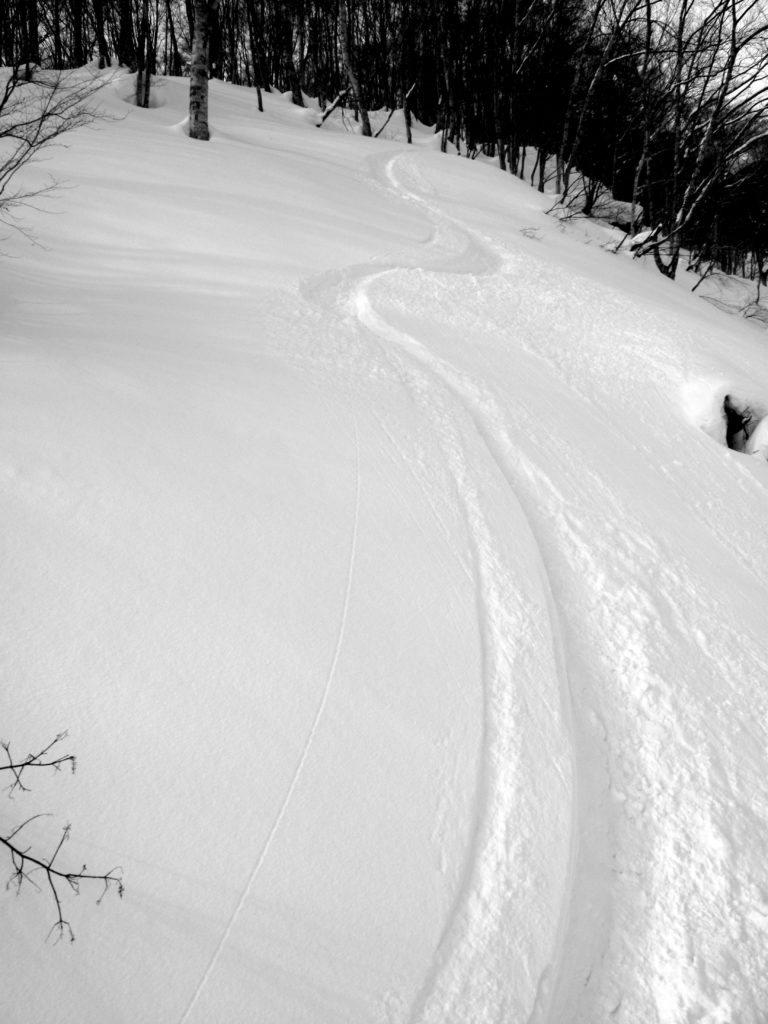
xxxx
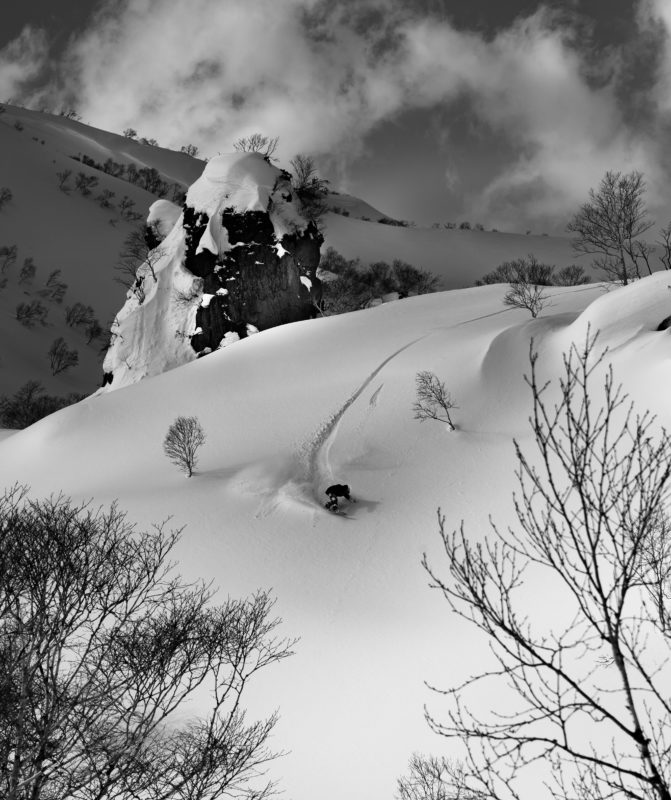
xx
Richard and Phil have left yesterday after their extra-extended stay, and so Naisi and I hike up a high ridge that will lead us over a shrubby shoulder onto a trail, freshly broken by a few Japanese shredders we saw from the lift. Now, after gliding through a bright birch forest, we have reached the last uphill part before we can enter a long, steep powder flank. Again I have to take off my board and use it as a plank to pull myself after it.
We clamber up a round pillow that I fear may collapse or break off with us, avalanching down the hill. Finally, we make it and Naisi takes the first run, just as the sun illuminates the entire mountainside. No slabs or avalanches follow him, so I push myself off the thick pillow and let it rip.
The spray behind me keeps standing in mid-air for a long time, the wind is whistling in my ears. Now I am just the floating of the board under my feet, the balance shifting from one edge to the other, the gravitational force that compresses my spine, the eagle’s glory of the wide turn, the satisfaction of controlled speed, and the presence of soft nature all around.
High-fiving Naisi at the run’s bottom it’s over all too soon. But it is imagination turned real, elementary, and timeless as a scene from a Hiroshige woodcut: two men with wooden planks under their feet, surfing a white volcano.
It is the exact moment I have seen in my mind’s eye when I first heard about backcountry snowboarding in Japan. It is a lasting moment.
xx
xx
✺ ✺ ✺
xx
xx
Links:
xx
IXSM Travels
xx
Myoko Kogen Ski Resort
xx
Japan Snow – A Search for Perfection
Ikigai: The Shin Biyajima Story
xx
Moss – A Legacy of Japanese Snowsurfing
xx
Pico Iyer: Escape to Snow Country (Condé Nast Traveler)
xx
Japanology Plus: Snow Country
xx
xx
xx
xxxx
